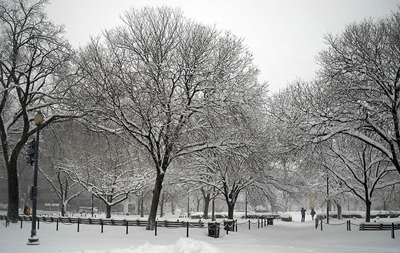
Renewable Energy: Introduction
Would the thought of icy sidewalks make you think twice about walking around in a city? If you live in Klamath, Oregon, the sidewalks are always warm and clear even on the coldest, snowiest days. That’s because Klamath has something really hot going on. Klamath relies on the warmth of magma-heated water just below Earth’s surface to heat its city streets and to provide heating services to buildings and homes. The city pumps the water up and distributes it to wherever heat is needed.
In just a few places on Earth, this "geothermal" water is close enough to the surface that its warmth can be harnessed as an energy source. Klamath is lucky enough to be one of those places. Not only does it save money, but it also reduces the pollution associated with burning fossil fuels for heat. Relying on this underground heat does not burn anything and has no wasteful byproducts. Maybe you do not have geothermally-heated water, but maybe you do have lots of sunshine, or wind, or rivers. All of these provide sources of alternative energy.